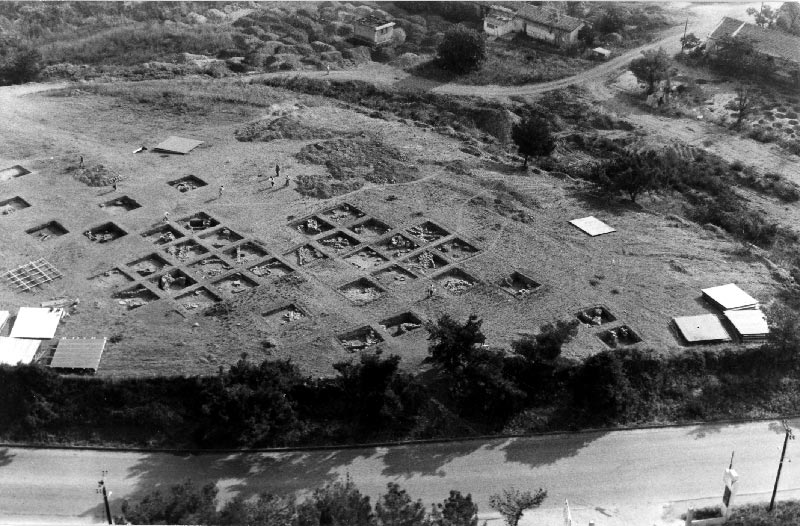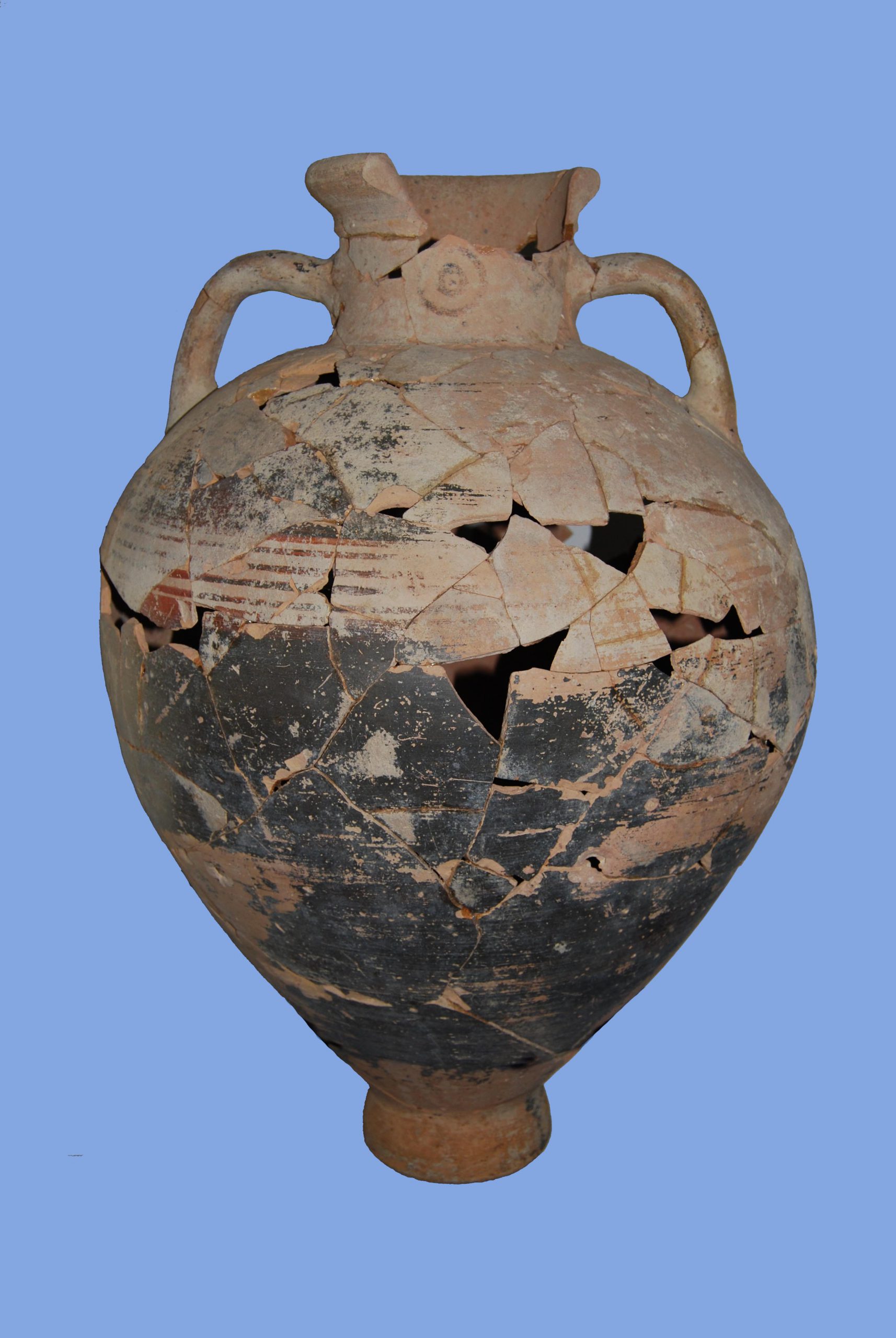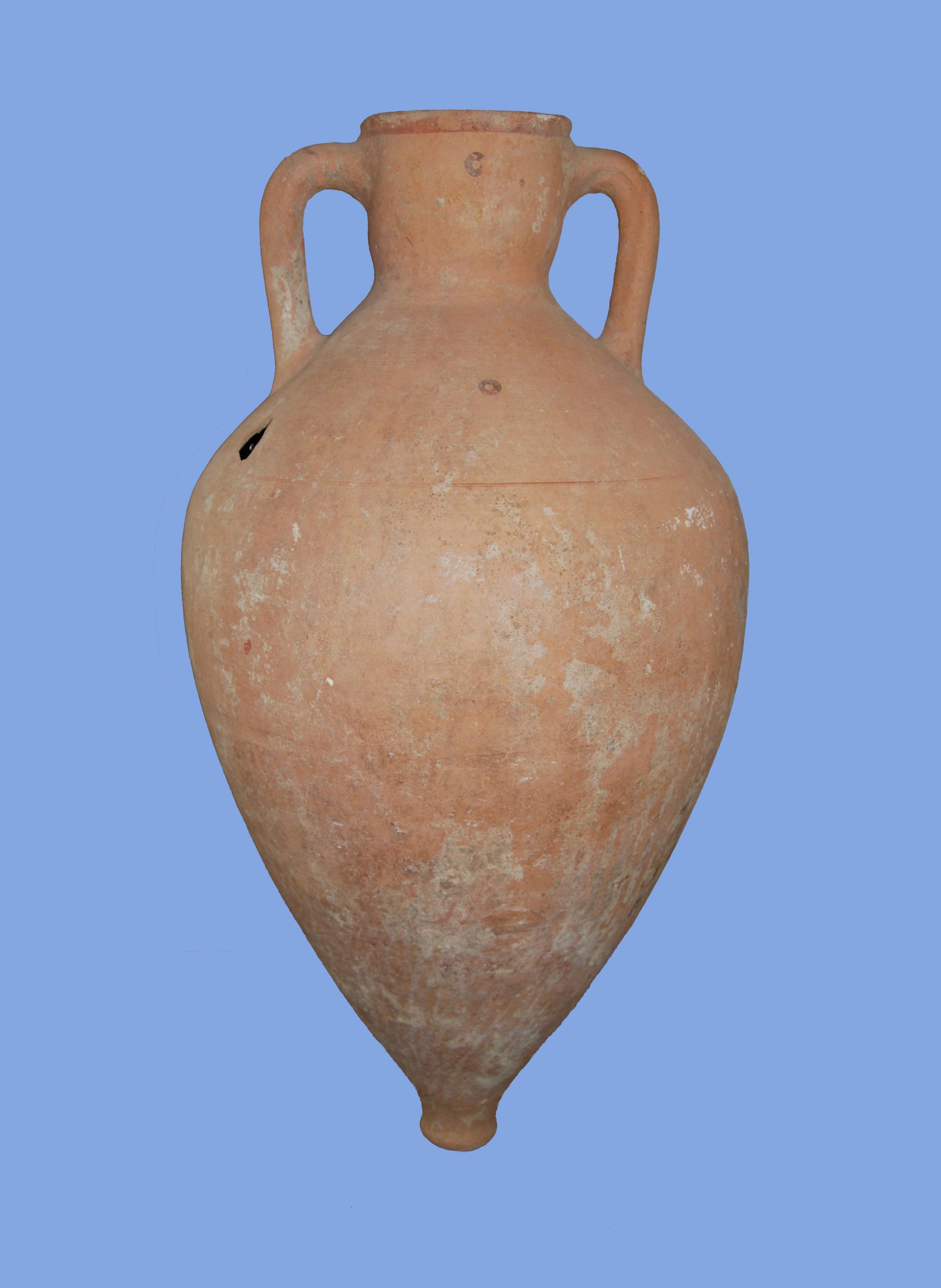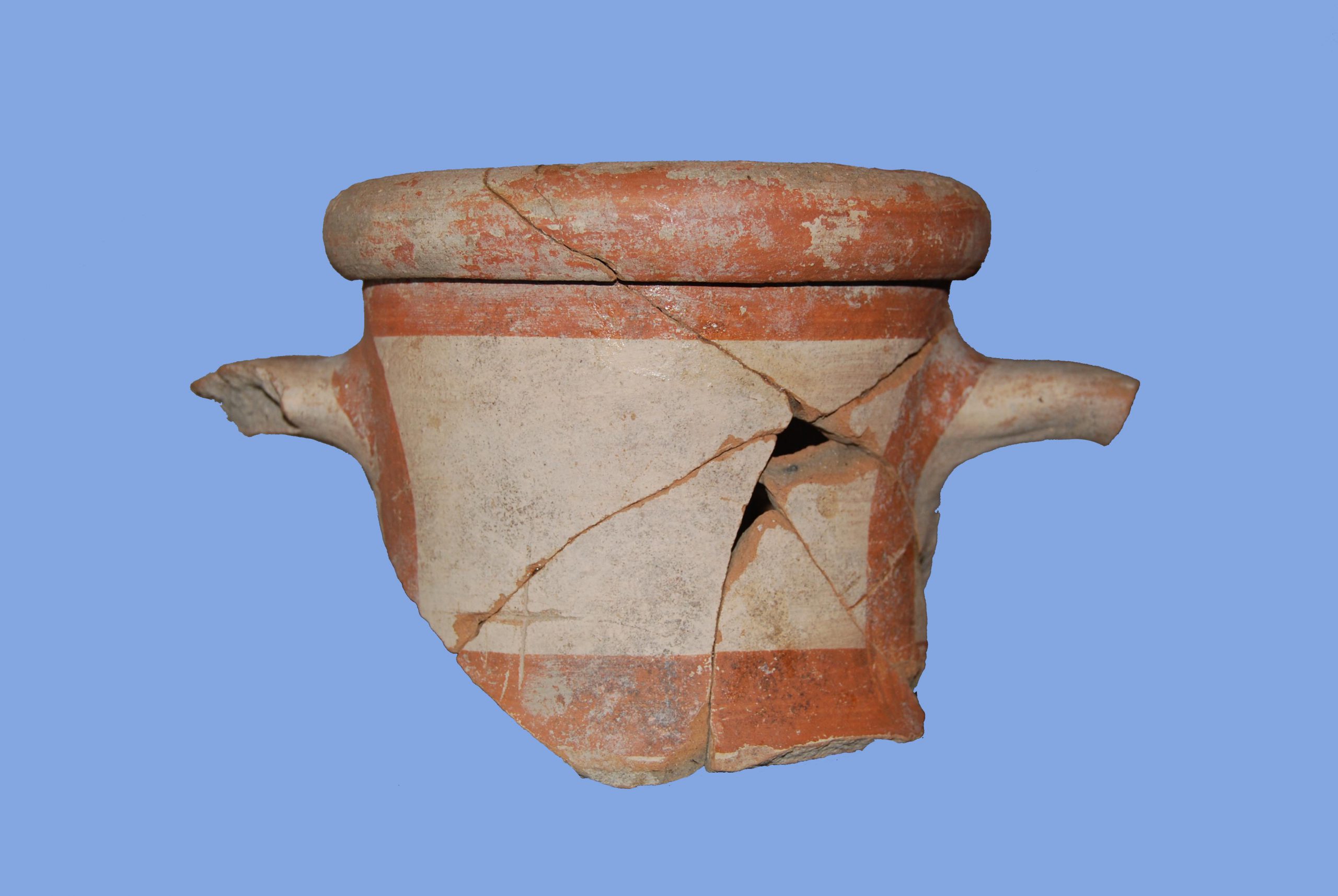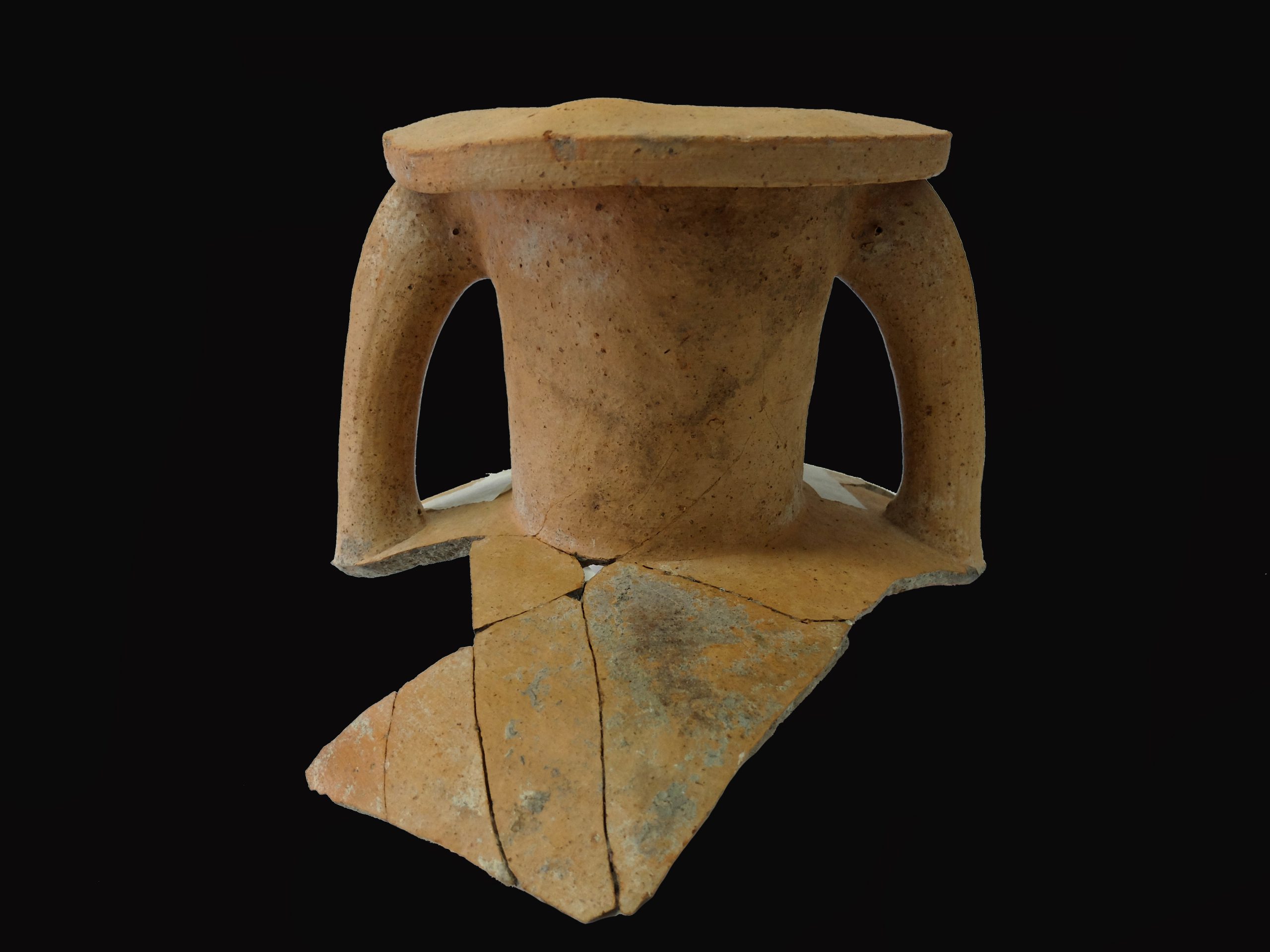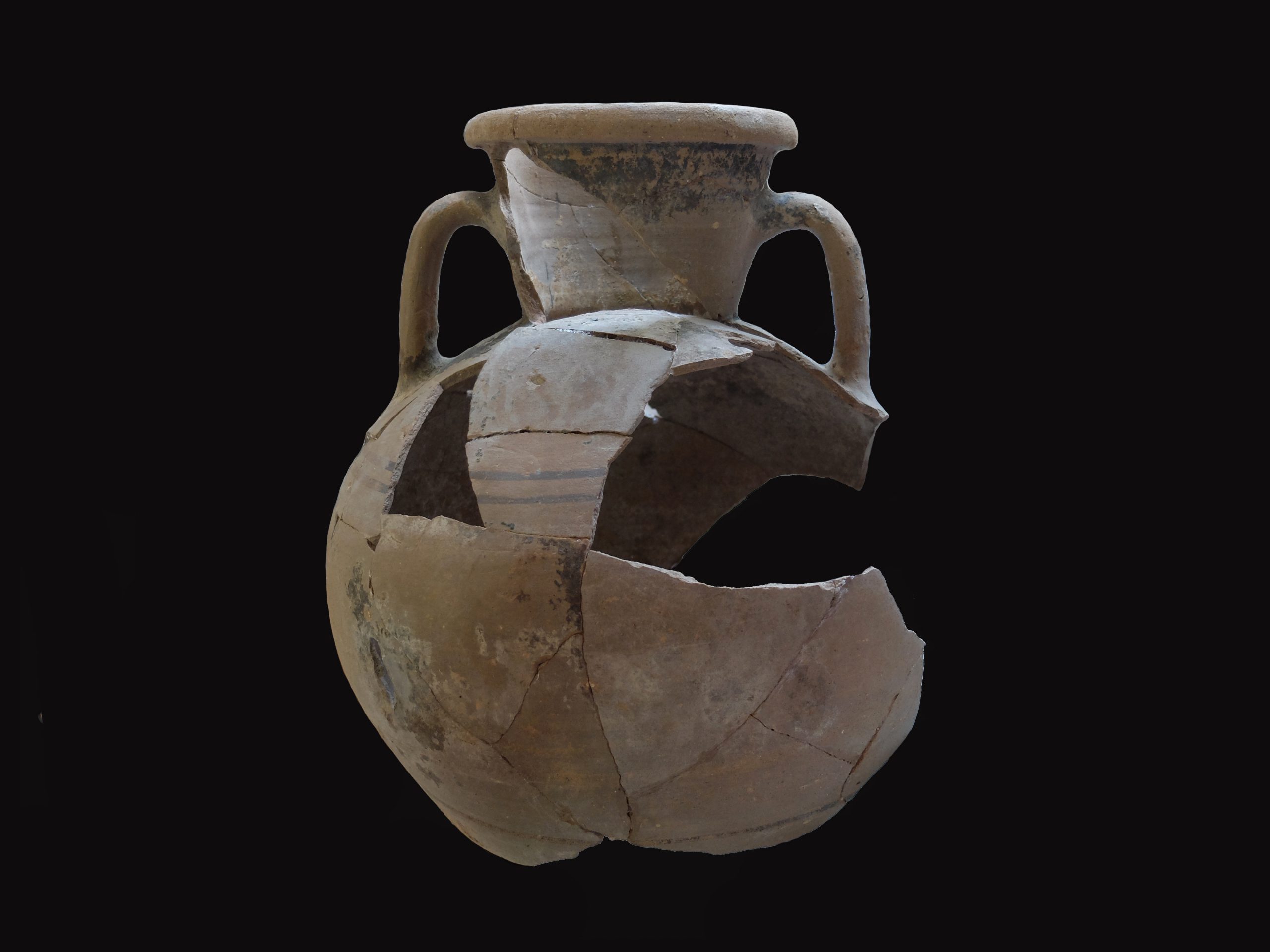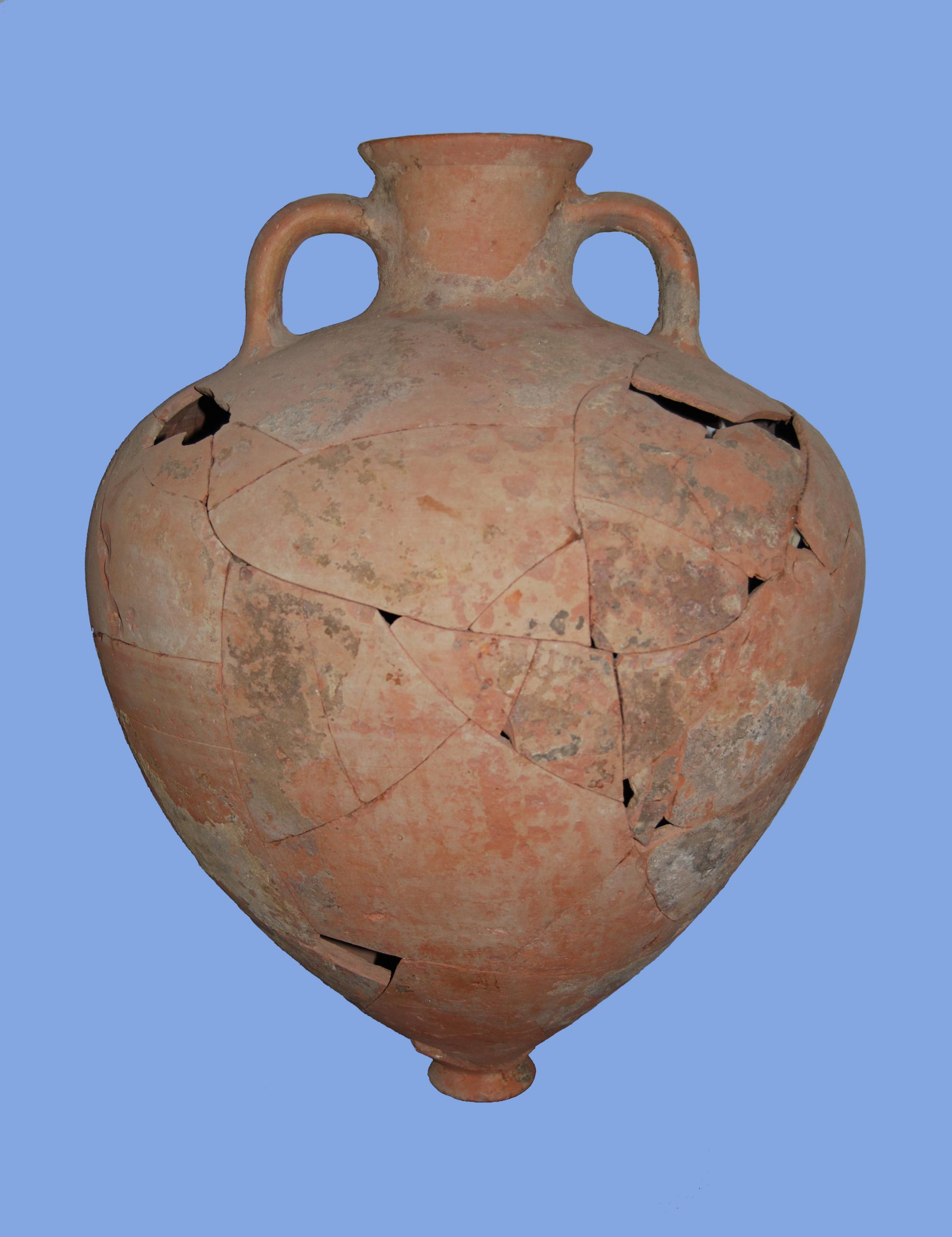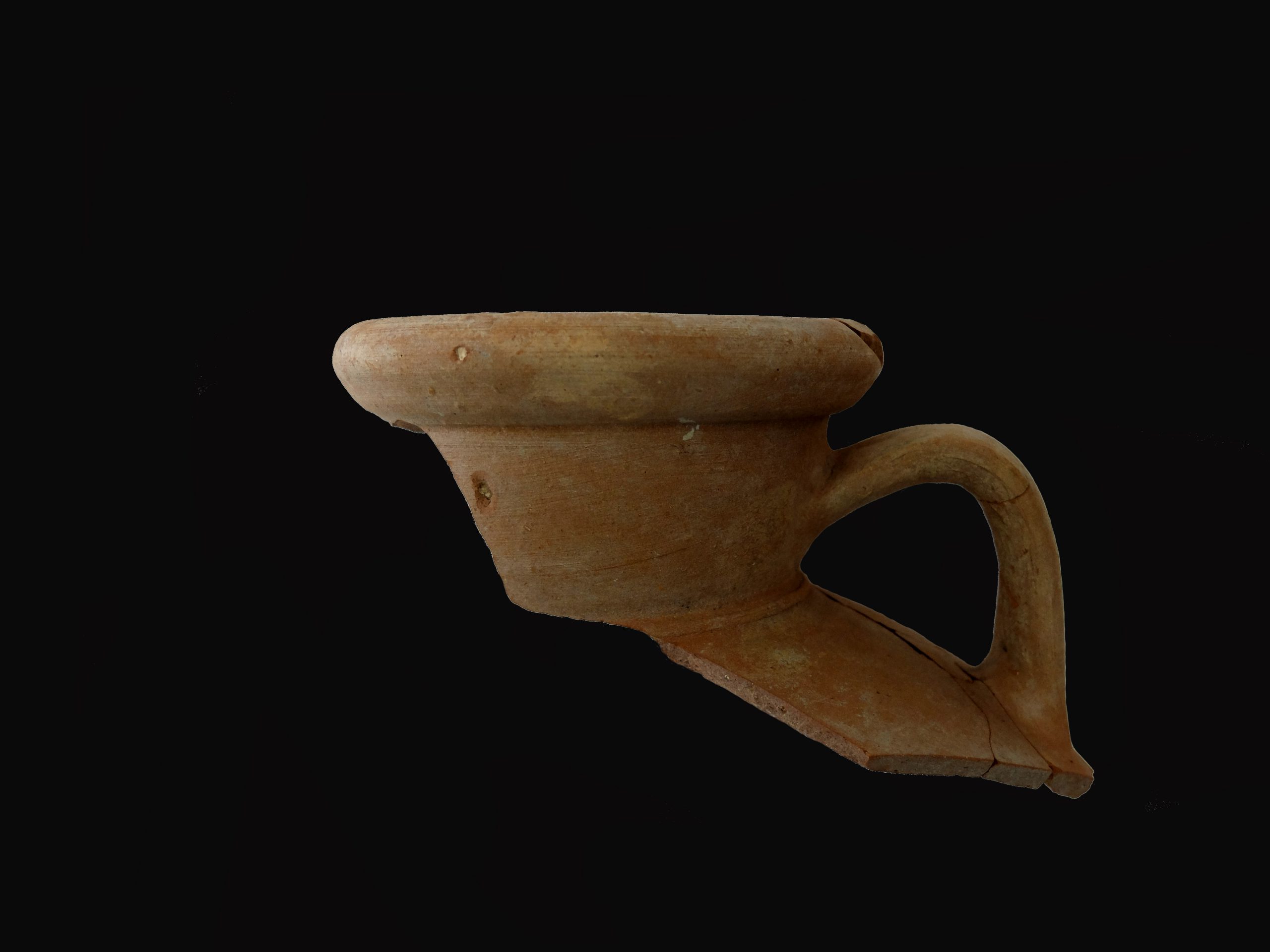Transport amphorae are exclusively utilitarian vessels, usually without decoration, which were mass-produced throughout the Mediterranean basin and the Black Sea, having as their main purpose the transport of primarily liquid (wine, oil) but also solid products (salted fish, fish sauces, dried fruits, nuts, olives, etc.). They are often found in large quantities in settlement excavations, as their presence is linked to the import and consumption of specific agricultural or other products and, by extension, to the dietary conditions of the inhabitants. Their production is directly related to the existence of agricultural surplus and its disposal – marketing to other consumption centres. Moreover, the large quantities of amphorae recovered from ancient shipwrecks throughout the Mediterranean are indicative that their standardized shape facilitated their use as transport vessels, similar to today’s containers. When the amphorae reached their final destination, if they were immediately emptied of their original product, they could also be reused as storage vessels in shops or homes.
The beginning of the production of the so-called Greek type of transport amphorae (the two other general types are the Etruscan and the Phoenician-Carthaginian) dates back to at least the middle of the 8th century BC. However, the great increase in their production is observed in late archaic, classical and Hellenistic times, when the major wine-producing centres of the northern Aegean (Mendi, Thassos, Akanthos, Peparithos, Ikos, Samothrace) and then the south-eastern Aegean (Rhodes, Knidos, Kos) were more active, with their famous products flooding the markets of the entire Mediterranean and the Black Sea.
The university excavations carried out since 1994 at Karambournaki have brought to light part of a particularly important settlement with a strong commercial character. Most of the various building remains found date back to Archaic times. Some of the rooms of these buildings were used for storage, as indicated by the presence of pithoi and especially by the large number of transport amphorae (intact or fragmentary). Amphorae can also be found in the well-known semi-subterranean cellular and, more rarely, rectangular structures, which are interpreted as storage areas. These vases were mainly intended for the trade in oil and wine, although the transport of many other products cannot be ruled out. During the Archaic period (7th-6th century BC), amphorae came mainly from Northern Ionia (Chios, Klezomenes, Erythres), Central Ionia (Samos, the wider area of Miletus), Southern Ionia, Aeolia (Lesvos) and Southern Continental Greece, mainly from Attica, Corinth and, more rarely, Laconia. From the late 6th and early 5th century, the strong presence of the so-called amphorae of the North Aegean is characteristic, coming from the nearby workshops of the Kassandra peninsula (e.g. Mendi), perhaps Sithonia, but also from the area of the Struma Gulf (e.g. Akanthos), Thasian peria and eastern Macedonia and Thrace. There are few examples of amphorae dating to the second half of the 5th and the 4th century BC, which is probably related to the later interventions in the area of the settlement, mainly in the late 19th and early 20th century, which caused several destructions. Dipinti or graffiti symbols and inscriptions related to their commercial use are quite often found on some amphorae.
Dr Kostas Filis
Ephorate of Antiquities of Achaia
